The Point was a project, and a place, that entered development in October of 2012, unfortunately to be shuttered exactly one year later. It was a collaborative idea, one that completed successfully and served its purpose for the brief time that I did it.
The project in short was the restoration of a 1920’s two bedroom house with mixed zoning for commercial and residential use. It was built with Oregon “cracker box” style, a foundation of wood posts on dirt forming a square. A major flood would ruin this place. The owner knows he’ll eventually raze the lot, so the scope was limited.
It was purposed as the offices of InterArts, providing us with valuable event space including an art gallery, a shared office suite, multimedia presentation suite, a private office, and a residence for myself. It was a difficult decision to let it all go.
Contractors filled in where I was neither confident in my skillset nor my volunteers. Together, we improved electrical systems, replaced flooring, repaired kitchen and bath facilities, revived landscaping, painted everything, and cleared a literal ton of garbage while recycling and repurposing everything else possible.
I was familiar with the house, having partied there several times through its heyday as “The Yellow House” between roughly 2009 and 2012, but it was Anisha Scanlon that picked up the lead to get in the property, hoping it would be a good HQ for her non-profit in development, Portland Organic Productions. And the idea for The Point originated years before with David Bryant, as we had worked on a plan to open a studio and event space in the neighborhood.
We had some important volunteers that I want to give credit to. Todd Guess directed the landscape design, teaching us about permaculture. He joined my Board of Directors later on as well. Richard Colvin gave high level administrative work improving our organization and financial planning. Joe Stone frequently schooled me with his construction skills. Robert Lewis got on a painting roll.
I can take credit for project management, much of the design, and for executing many tasks. The project was completed within about four months, costing mere hundreds of dollars on my end and few thousands on the owner’s end.
Considering the improvements we made, the property owner got an excellent deal, as we contracted within our network, he saved massive labor costs, and increased its rental value. Because we were repairing a commercial property rental, which is a normal business activity, we had access to our own in-kind donor network, providing hundreds of dollars in savings with donated materials. We painted the whole exterior of the house without spending a dollar.
Today, I own a home and had I not gone through that, I believe I’d be in a poor position to restore this house all on my own. Nonetheless, I have to admit that it is a shame that I did not keep my non-profit and that project going, as it was rare opportunity.

Front Entrance before 
Front Entrance after 
Living room before 
Living room after (art gallery seating) 
Kitchen before 
Kitchen after 
Kitchen view across house, before 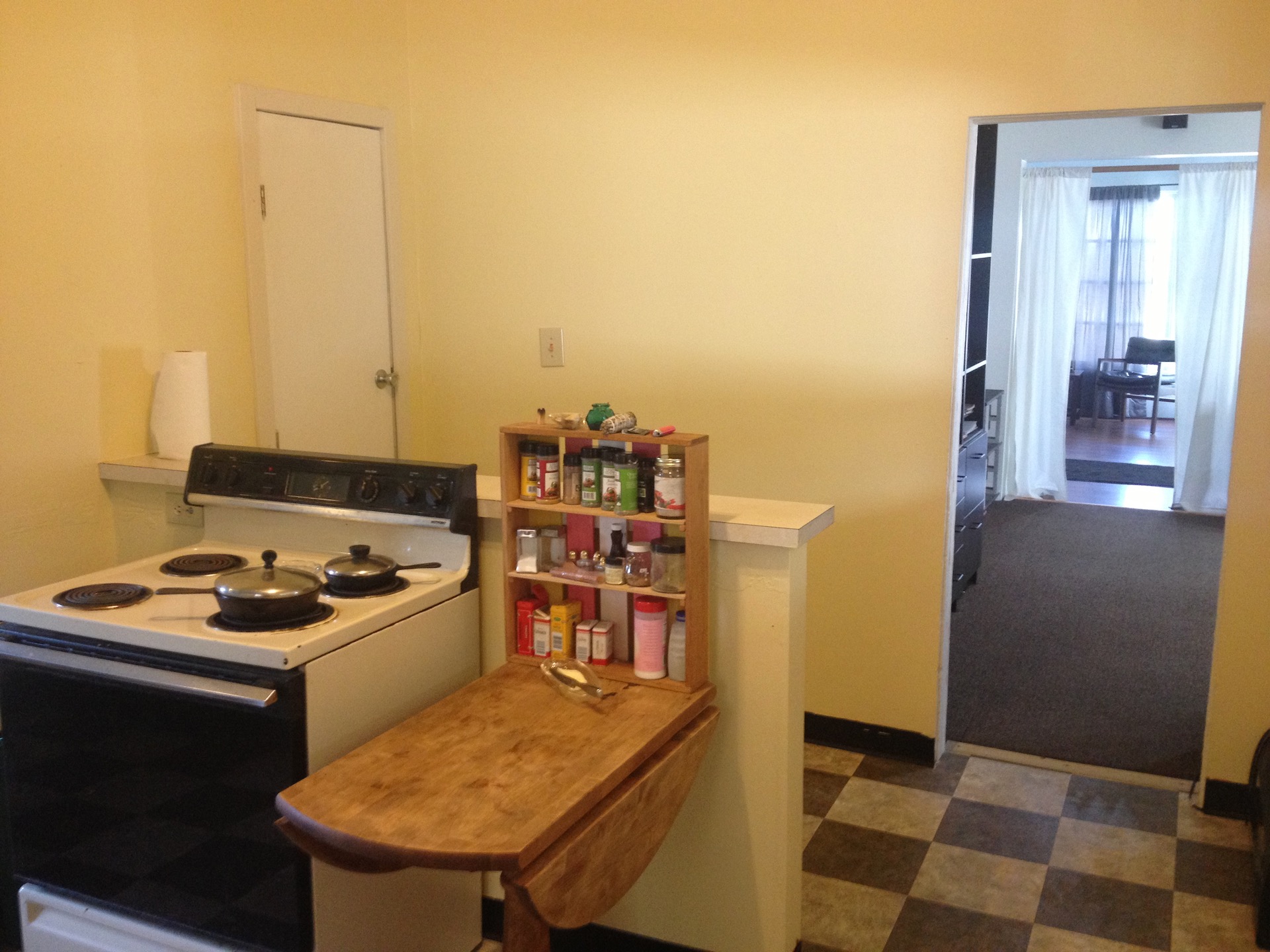
Kitchen view across house, after 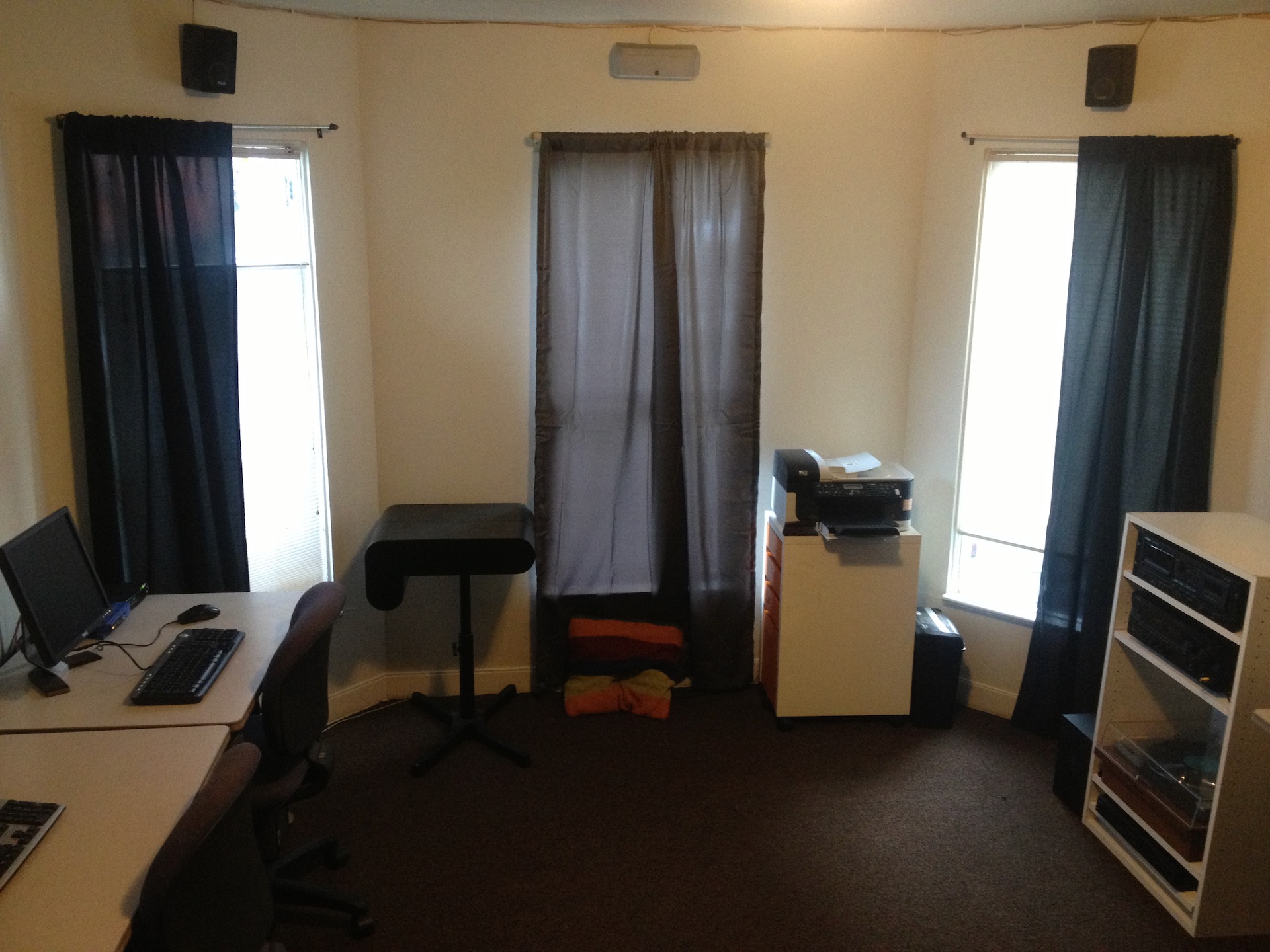
Shared office space 
Lindsey Kugler and Becca Yenser spoken word performance 
Joseph Stone with guns out cuz suns out 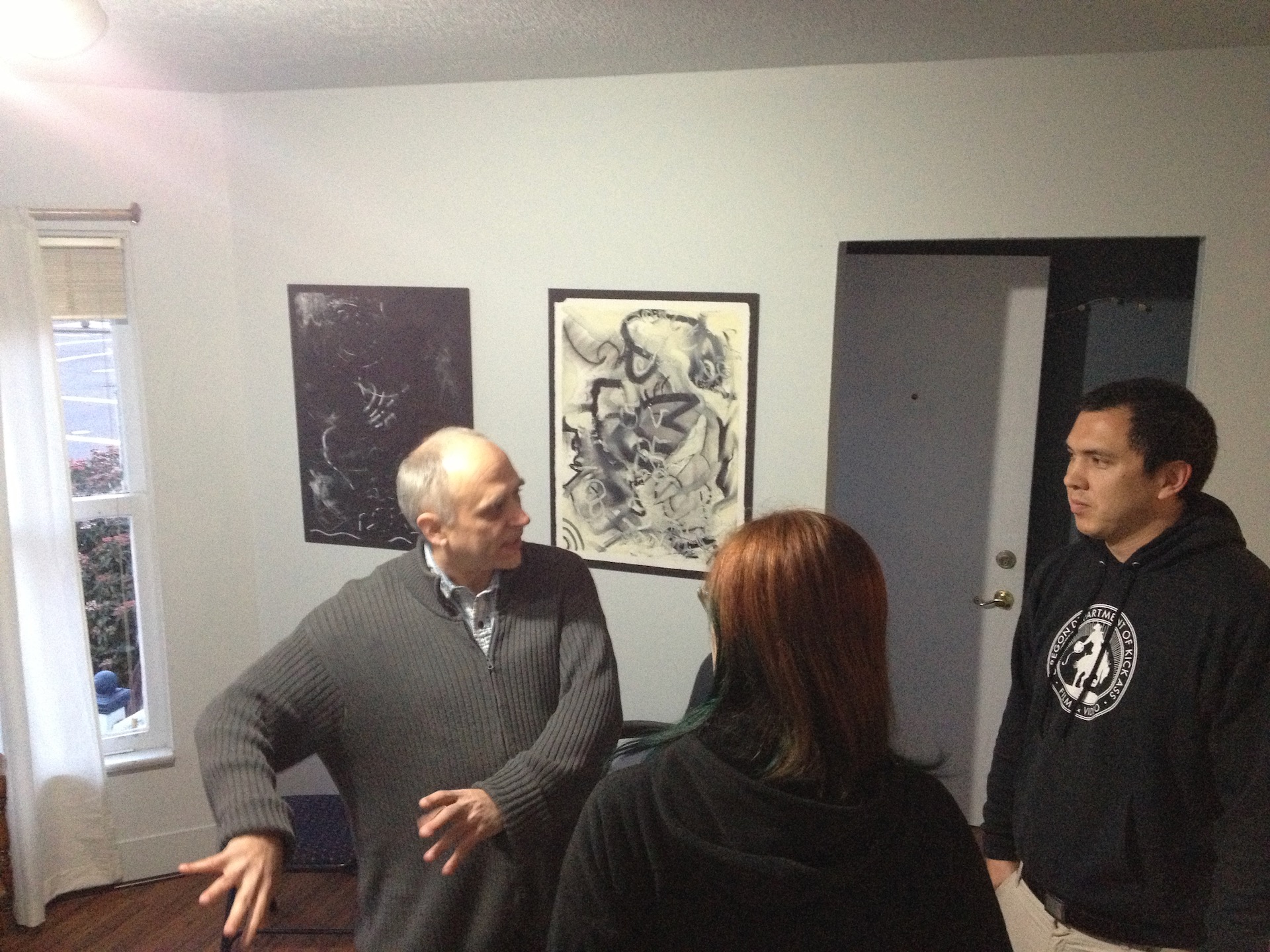
David Bryant talking with Karl Lind 
Back patio before 
Back patio after 
Patio tables that I installed. 
Robert Lewis 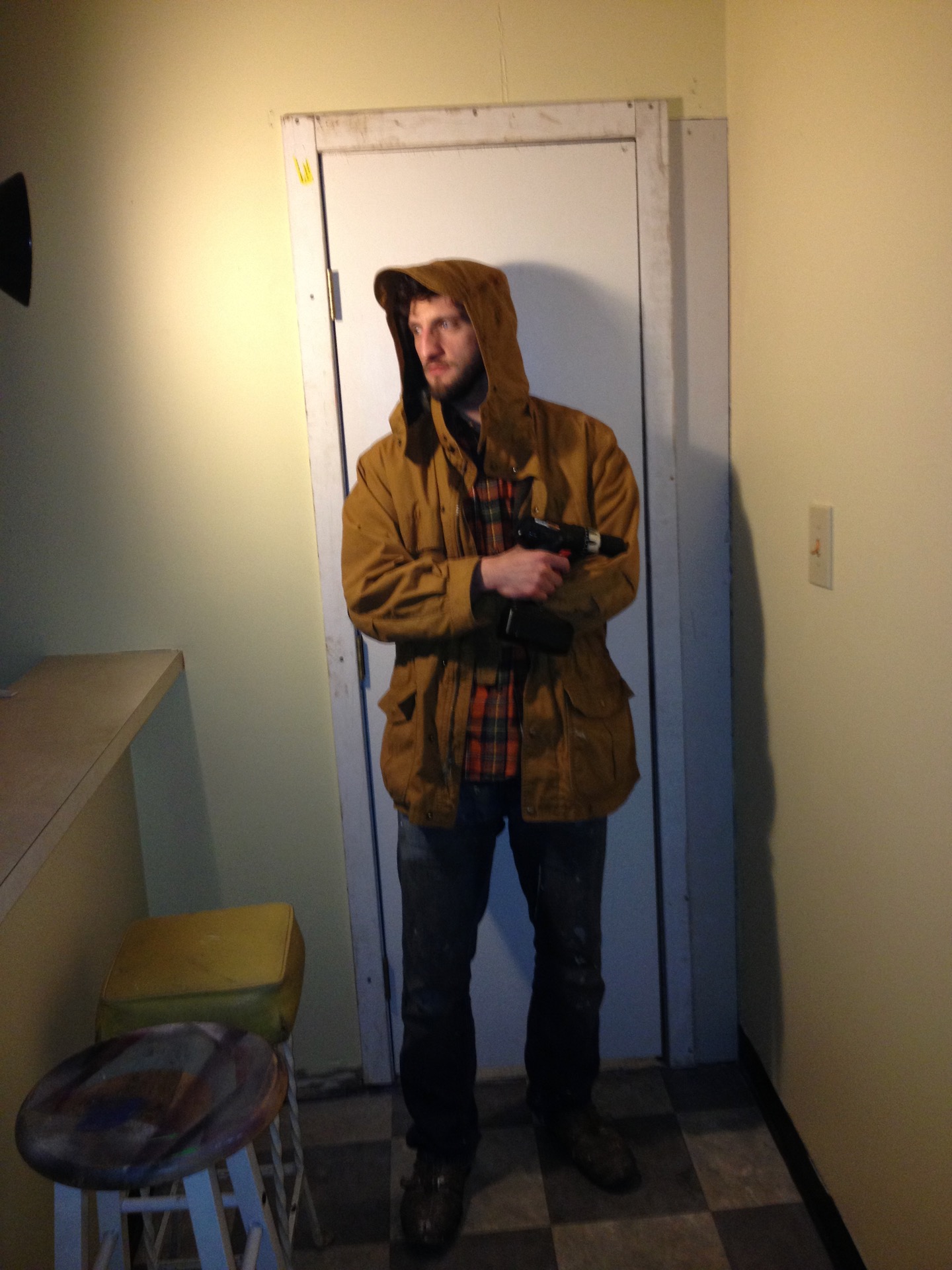
Posing with my drill after banging out this door. 
Todd Guess preparing to sheet mulch 
Gathering leaves for mulch 
Fresh pile of mulch 
Backyard corridor before 
Backyard corridor after 
Backyard before 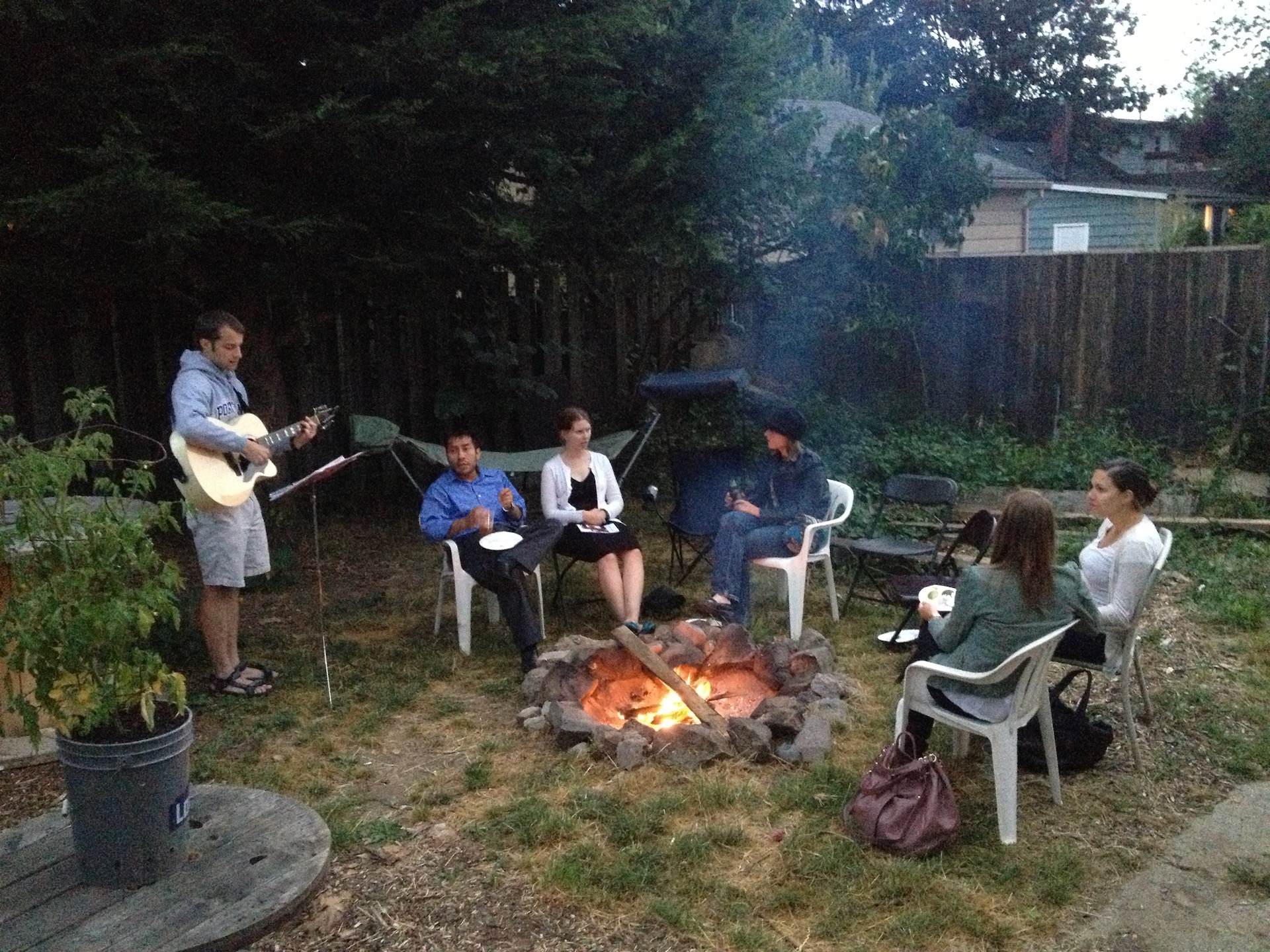
Backyard after 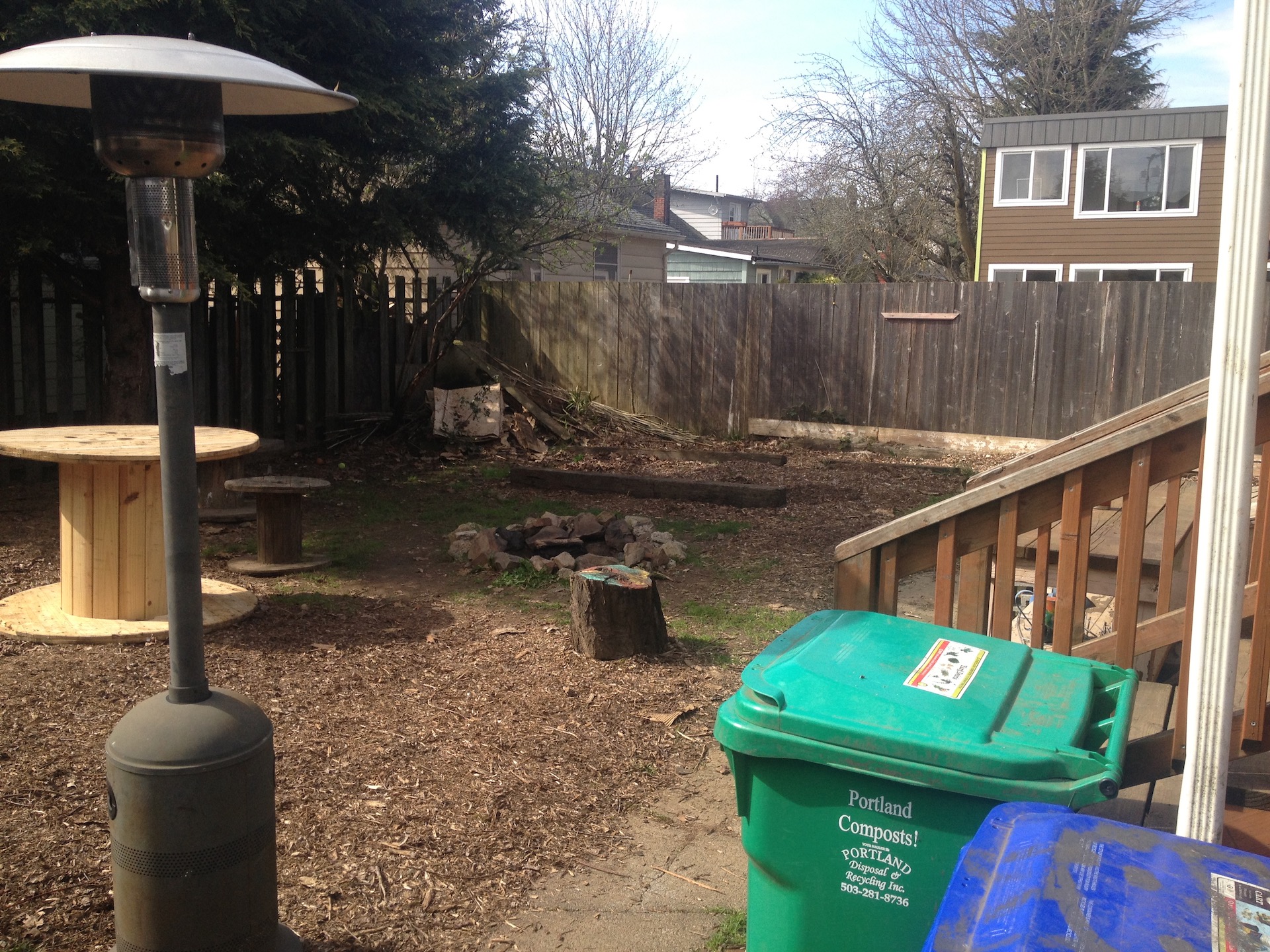
Backyard fresh after sheet mulch 
Front yard after fresh sheet mulch
